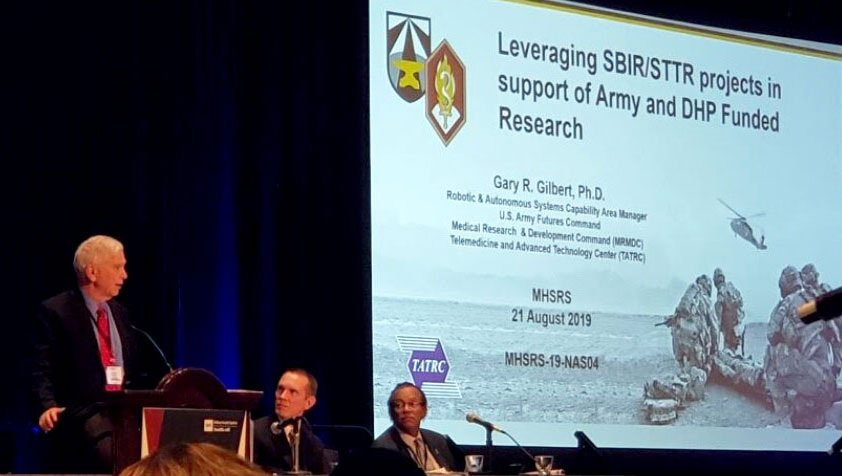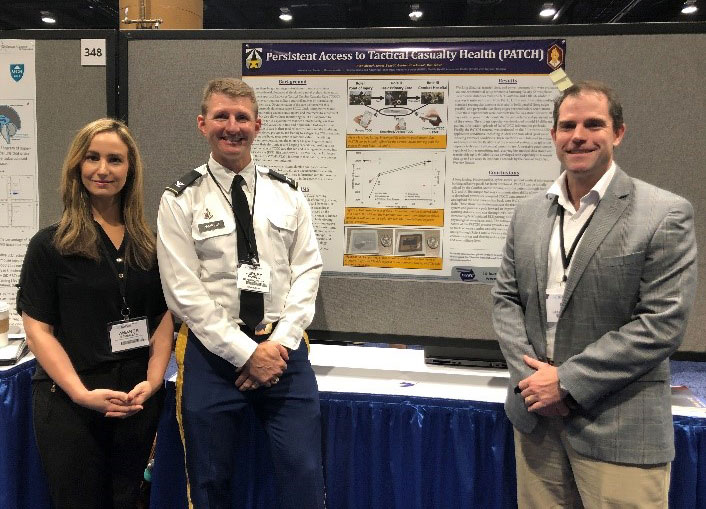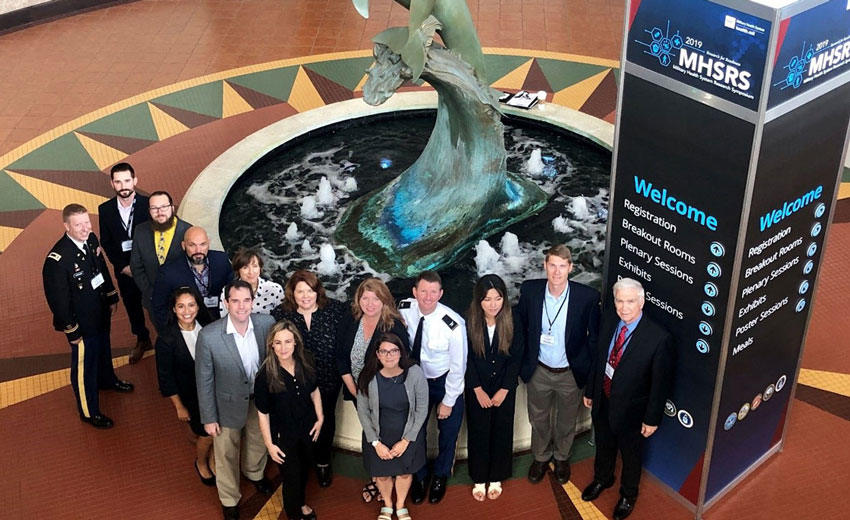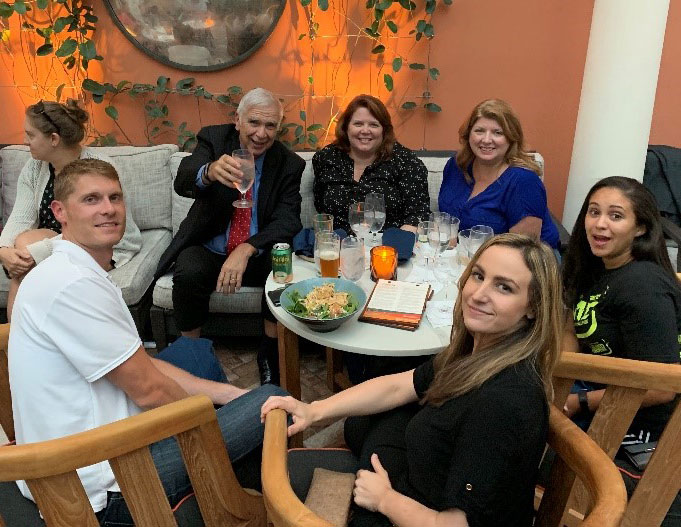TATRC Research Shines at 2019 MHSRS
September 30, 2019 | Download PDF
 Dr. Gary Gilbert, MISL Lab Lead, speaks about the success of leveraging SBIR/STTR projects in support of Army research.
Dr. Gary Gilbert, MISL Lab Lead, speaks about the success of leveraging SBIR/STTR projects in support of Army research.
Team TATRC made their way to the sunshine state in Kissimmee, Florida from 19 – 23 August for the MHS Research Symposium (MHSRS). The Annual MHSRS, held at the Gaylord Palms Resort & Convention Center, is the Department of Defense’s premier scientific meeting that focuses on Combat Casualty Care (CCC). It combines three previous conferences, including the former Advanced Technology Applications for Combat Casualty Care Conference (ATACCC); the Air Force Medical Service Medical Research Symposium; and the Navy Medicine Research Conference under one, main joint umbrella. The MHSRS conference is an ideal venue to assess other research efforts that are currently in progress and/or recently completed, that may assist TATRC in the focus for their future research efforts and initiatives. The networking opportunities alone to meet with current partners and future collaborators makes this an extremely valuable annual event.
Vice Adm. Raquel C. Bono, the Defense Health Agency (DHA) Director at the time stated, “The MHSRS has become one of the Military Health System’s premier events, and each year that I’ve been the DHA Director, I’ve watched it grow and expand. It is always energizing and amazing to see how the representation at each MHSRS has become more global while the caliber of research presentations and breakout sessions have risen to a very high scientific level. MHSRS provides the opportunity to take stock of the many research and development contributions across the MHS that will keep us laser-focused on research for readiness and on innovations that will surpass our own historically high survival rates on the battlefield.”
 Ms. Amanda Schmeltz, COL Jeremy Pamplin, & Mr. Ron Yeaw representing one of the many TATRC posters during the scientific poster session.
Ms. Amanda Schmeltz, COL Jeremy Pamplin, & Mr. Ron Yeaw representing one of the many TATRC posters during the scientific poster session.
Ms. Amanda Schmeltz, Research Project Manager at TATRC’s Mobile Health Innovation Center (mHIC) also sees the immense value. “The MHSRS is a truly dedicated and protected time to step out of daily task mode, connect with and learn the needs of our medic Warfighters on the battlefield where the only constant is change, and get a pulse check on the trends within the MHS, as well as amongst DoD industry partners. The renewed perspective when returning home refreshes the purpose of mission, which can easily get buried in the day-to-day challenges of conducting research, regardless of one’s role in the research.”
 The Team gathered for the annual photo at MHSRS 2019.
The Team gathered for the annual photo at MHSRS 2019.
mHIC Regulatory Compliance Nurse, Ms. Mabel Cooper appreciates MHSRS for the chance to meet so many peers in her field. “At the end of the day it’s about the potential for lives saved and the quality of life of Warfighters no matter what stage of their careers they’re in. That is what makes this meeting of the minds so amazing and invigorating.”
 Team TATRC takes a break from the MHSRS action and share ideas over a meal.
Team TATRC takes a break from the MHSRS action and share ideas over a meal. TATRC had representation from each of its key labs and was actively engaged across the four day event attending breakouts, defending and presenting posters, and performing podium presentations. In fact, TATRC could be found speaking at six different posters and five breakout sessions covering the gamut of Telehealth, Behavioral Health, Artificial Intelligence, Autonomous Casualty Extraction in Multi Domain Operations, Medical Robotics, Blast Injury and Virtual Health.
This MHSRS was the first for LTC Justin Stewart in his new role as TATRC Deputy Director. “MHSRS provided TATRC an opportunity to showcase our great talents. I am humbled to be part of an organization so focused on improving Warfighter health by leveraging both present and future technology.”
The TATRC team is already looking forward to the 2020 MHSRS and hopes to expand our presence even further.
This article was published in the March 2020 issue of the TATRC Times.